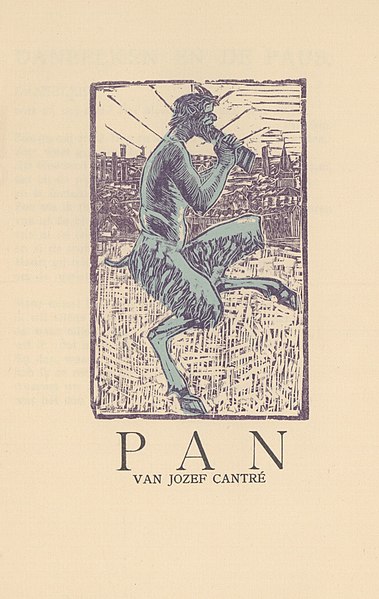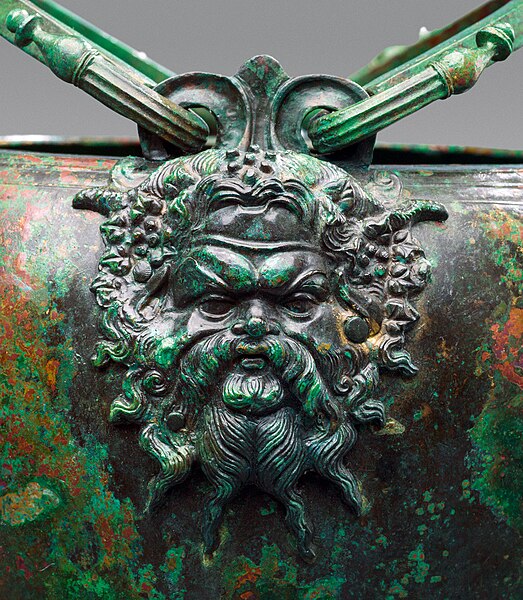In classical Greek mythology, Syrinx was an Arcadian nymph and a follower of Artemis, known for her chastity. Being pursued by Pan, she fled into the river Ladon, and at her own request was metamorphosed into a reed from which Pan then made his panpipes.
Pan poursuivant Syrinx drawing by Girodet, 1826
Pan Pursuing Syrinx by Ignaz Elhafen, c. 1690-1695, LACMA.
Pan and Syrinx by Jean-François de Troy, 1722-1724
In ancient Greek religion and mythology, Pan is the god of the wild, shepherds and flocks, rustic music and impromptus, and companion of the nymphs. He has the hindquarters, legs, and horns of a goat, in the same manner as a faun or satyr. With his homeland in rustic Arcadia, he is also recognized as the god of fields, groves, wooded glens, and often affiliated with sex; because of this, Pan is connected to fertility and the season of spring.
Pan teaching his eromenos, the shepherd Daphnis, to play his pan flute, Roman copy of Greek original c. 100 BC, found in Pompeii.
Pan illustrated in the Flemish magazine Regenboog. Draft for the woodcut Pan of Jozef Cantré. Published in 1918.
Mask of the god Pan, detail from a bronze stamnoid situla, 340–320 BC, part of the Vassil Bojkov Collection, Sofia, Bulgaria
Representations of Pan on 4th-century BC gold and silver Pantikapaion coins.







